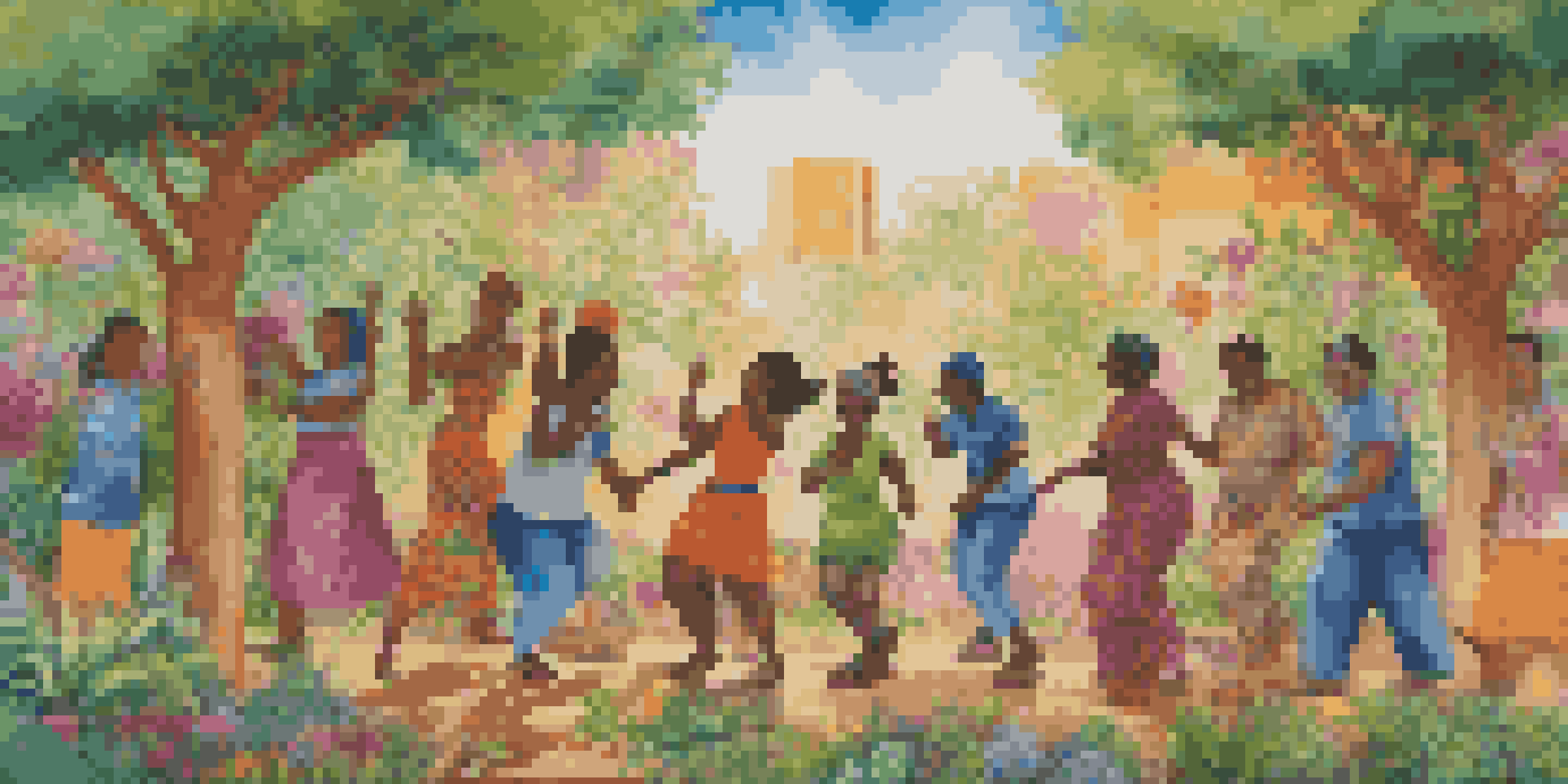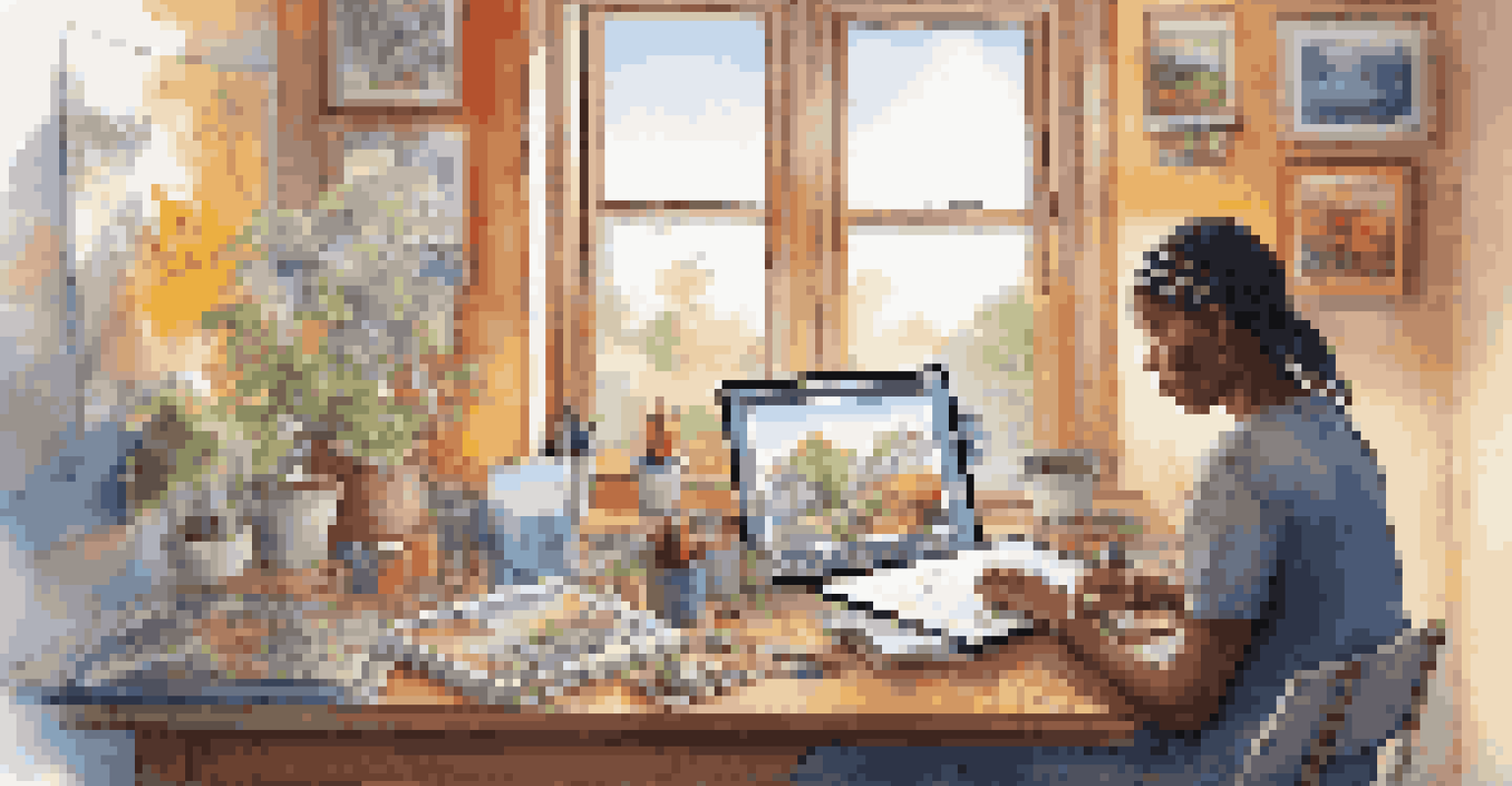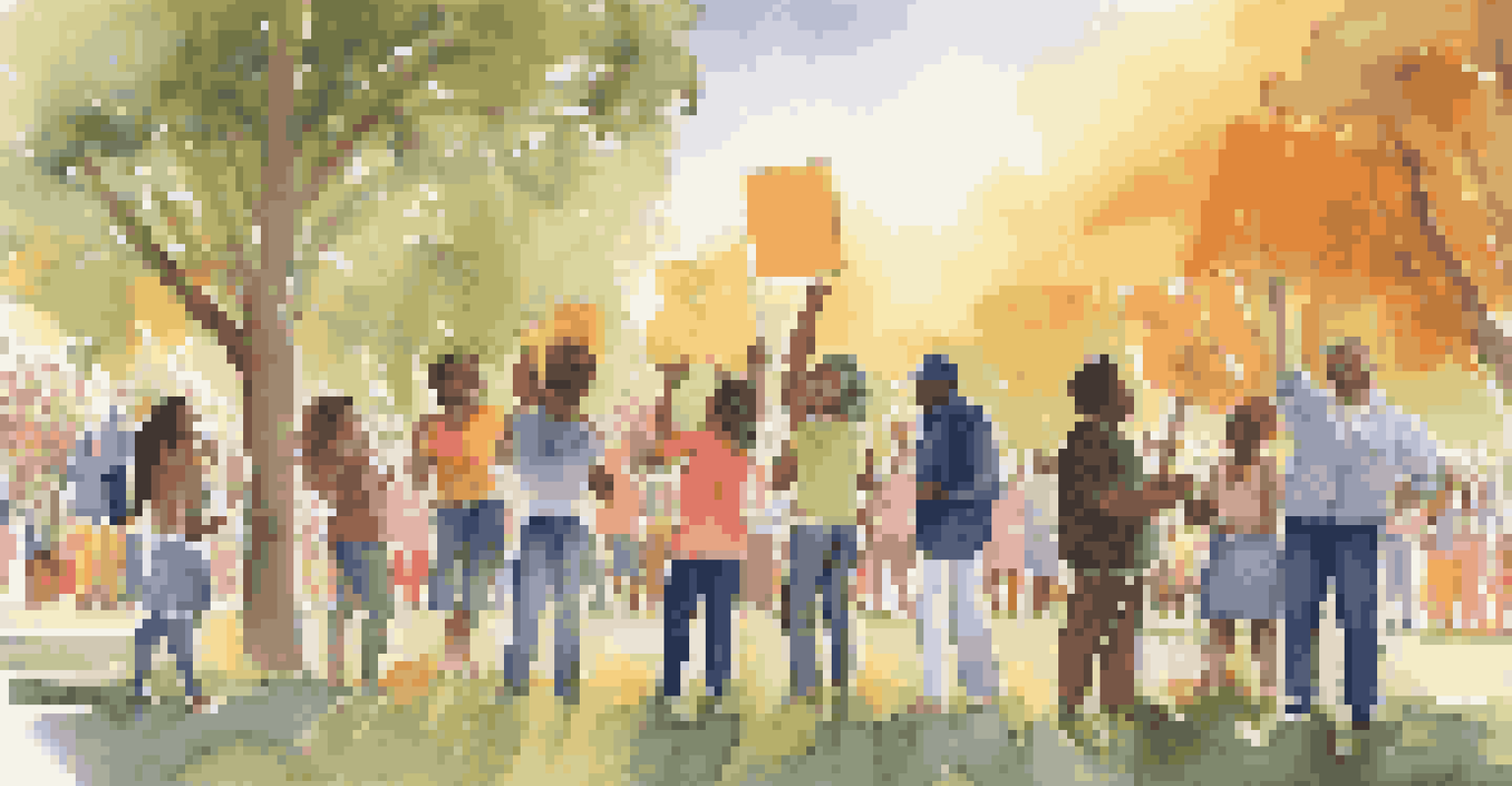The Role of Digital Media in Modern Activist Art Movements

Understanding Activist Art in the Digital Age
Activist art has evolved significantly with the rise of digital media. Traditionally, art served as a powerful tool for social change, but today's artists have a broader canvas to work with. Digital platforms allow for a more immediate and widespread dissemination of messages, making it easier for artists to connect with global audiences.
Art is not a mirror held up to society, but a hammer with which to shape it.
In the digital age, activist art goes beyond traditional galleries and public spaces. Artists can now share their work on social media, blogs, and websites, reaching people who may never step foot in a museum. This shift not only democratizes art but also amplifies the voices of marginalized communities who often use digital media to share their stories.
Moreover, the interactive nature of digital media fosters deeper engagement. Audiences are no longer passive viewers; they can participate, share, and even co-create, leading to a collaborative approach to activism that transcends geographical barriers.
The Power of Social Media in Activist Art
Social media platforms like Instagram, Twitter, and TikTok have become vital tools for activist artists. These platforms allow artists to showcase their work instantly and engage with followers in real-time. A single post can go viral, spreading an important message far beyond what traditional media could achieve.

Take, for example, the #BlackLivesMatter movement, which saw artists around the world use their platforms to share powerful visuals that highlighted systemic racism. The impact of these images was profound, sparking conversations and inspiring action. Social media not only amplifies the art itself but also the stories and struggles behind it.
Digital Art Amplifies Activism
Digital platforms enable artists to share their work globally, democratizing art and empowering marginalized voices.
Furthermore, social media enables artists to form communities and networks. Collaboration among artists, activists, and supporters can lead to innovative projects that might not have been possible in the pre-digital era, creating a vibrant ecosystem for change.
Digital Tools Empowering Activist Artists
Today's activist artists have access to an array of digital tools that empower their creativity. Software like Adobe Creative Suite and free online platforms such as Canva enable artists to produce high-quality visuals without needing extensive training. This accessibility encourages more individuals to express their activism through art.
The role of the artist is to make the revolution irresistible.
Additionally, video editing tools allow artists to create compelling narratives that resonate on platforms like YouTube and TikTok. These short, impactful videos can convey complex issues in just a few minutes, making them digestible for a wide audience. This format is particularly effective in capturing the attention of younger generations who prefer quick, engaging content.
Moreover, augmented reality (AR) and virtual reality (VR) are emerging as innovative mediums for activist art. These technologies offer immersive experiences that can evoke strong emotional responses, allowing audiences to engage with pressing social issues in a profound way.
The Role of Crowdfunding in Activist Art Projects
Crowdfunding platforms like Kickstarter and GoFundMe have transformed how activist artists finance their projects. Artists can bypass traditional funding routes and directly appeal to their audience for support. This shift not only democratizes funding but also allows for more diverse voices to be heard.
For instance, a project focused on environmental activism might attract backers who are passionate about sustainability. By tapping into a community of supporters, artists can bring their visions to life without relying on grants or corporate sponsorships that may dilute their message.
Social Media Fuels Engagement
Social media has become essential for activist artists, allowing them to connect with audiences in real-time and foster community collaboration.
Furthermore, successful crowdfunding campaigns often create a sense of ownership among supporters. When individuals contribute financially, they feel more connected to the project, leading to a community-driven approach that enhances the impact of the artwork.
The Intersection of Art and Activism in Online Spaces
Digital media has created new online spaces where art and activism intersect. Websites, forums, and social media groups dedicated to specific causes allow artists to share their work and connect with like-minded individuals. This interconnectivity fosters collaboration and the exchange of ideas.
For example, platforms like DeviantArt and Tumblr have long served as hubs for activist artists to showcase their work and engage in discussions about social issues. These spaces allow for the exploration of diverse perspectives, leading to richer and more nuanced artistic expressions.
Moreover, the anonymity of the internet can empower artists to express controversial or politically charged ideas without fear of repercussions. This freedom encourages bold and innovative works that challenge the status quo and provoke important conversations.
Challenges Faced by Activist Artists Online
Despite the opportunities digital media presents, activist artists face numerous challenges in the online space. One major issue is the prevalence of online harassment and censorship, particularly for those addressing sensitive topics. Many artists find themselves navigating a landscape where their work can be misinterpreted or attacked.
Additionally, the algorithms governing social media platforms often prioritize content that generates high engagement, which may not always align with the messages of activist art. As a result, important works can get lost in the noise, making it difficult for artists to reach their intended audience.
Crowdfunding Supports Diverse Voices
Crowdfunding empowers activist artists to finance their projects directly through community support, ensuring diverse perspectives are heard.
Furthermore, the fast-paced nature of digital media can lead to the commodification of activism. When important messages become trends, there’s a risk that the underlying issues may be overshadowed by fleeting attention spans, making it crucial for artists to find ways to maintain depth in their work.
Future Trends in Digital Activist Art
As technology continues to evolve, so too will the landscape of digital activist art. Emerging technologies like artificial intelligence and machine learning are beginning to influence how artists create and share their work. These advancements could lead to more personalized and interactive experiences for audiences.
Moreover, as digital art becomes increasingly mainstream, there’s potential for greater institutional recognition of activist art. Museums and galleries may begin to embrace digital formats, allowing activist artists to showcase their work in more traditional venues while still maintaining their digital presence.

Ultimately, the future of digital activist art is bright. As artists continue to leverage digital media, they will undoubtedly find new and innovative ways to advocate for change, challenge societal norms, and inspire action in their communities.